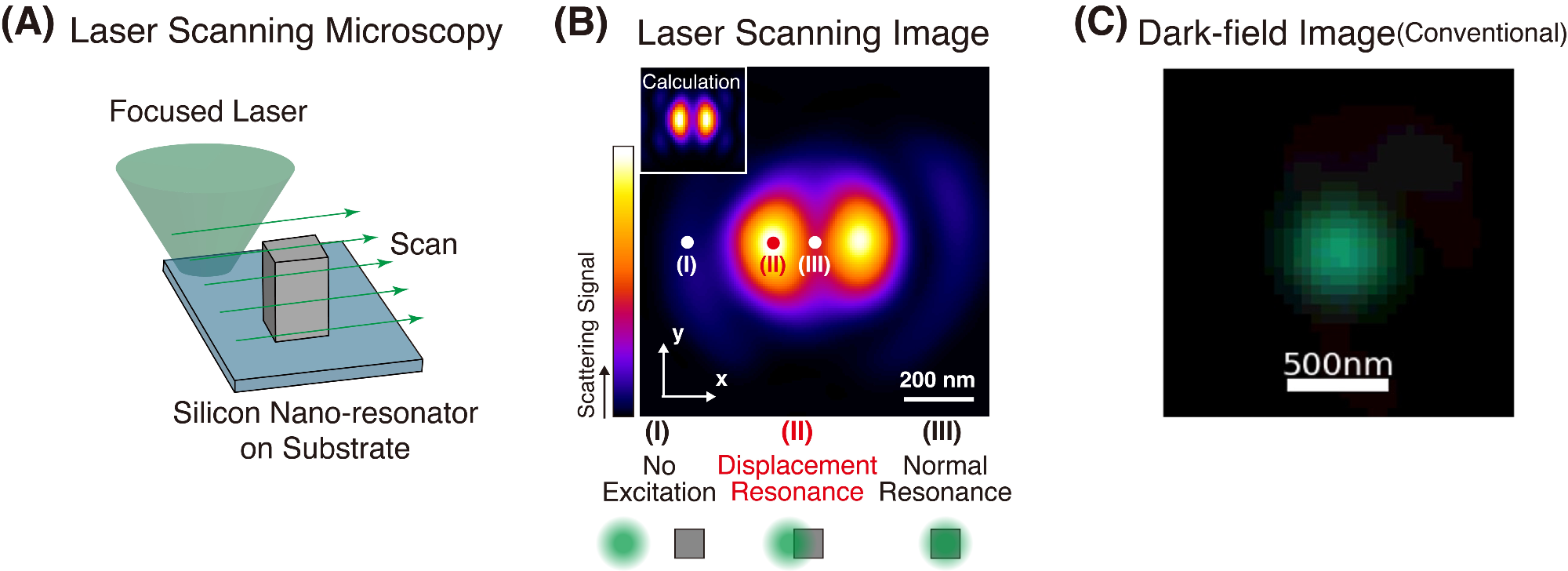When light interacts with particles of a specific size, a phenomenon known as “Mie scattering” produces the amazing forms of clouds in the sky or makes it difficult to see through thick, foggy fog. An increasing amount of research is being done in an effort to control this phenomenon and enable a variety of fascinating technologies.

(A) Principle of laser scanning microscope, (B) Image of Silicon Mie resonator by laser scanning microscope, (C) Dark field Image of (B) taken by conventional optical microscope. Image Credit: 2023 Yu-Lung Tang et al., Nature
Recently, a multi-institutional research team comprising Osaka University overcame what were previously believed to be fundamental barriers to improving the efficiency of Mie scattering. Their study was reported in Nature Communications.
Meta-photonics researchers leverage processes such as Mie scattering to provide device outputs that are not achievable with traditional nanomaterials, like low-power security systems.
However, scientists have long believed that the only way to control Mie scattering was to alter the light’s wavelength or the size of the nanostructure it interacts with. The objective of this study was to overcome this constraint by building on previous research that examined the alignment of the laser with the nanostructures.
In our approach, we misalign the incident laser. In other words, we displace the illumination position on a nanometer scale from the center of the target nanostructure.
Yu-Lung Tang, Study Lead Author, Department of Physics, National Taiwan University
By doing this, the researchers discovered that the degree of the tightly concentrated laser’s misalignment with the nanostructure's center determined the dispersion that the silicon nanostructures displayed. Since traditional microscopy employs plane wave light illumination, the maximal Mie resonant scattering that was previously veiled might be induced by a misalignment of just 100 nanometers.
The efficiency of optical technology could be improved by these results. The team’s efforts, for instance, may contribute to the development of all-optical transistors, or transistors that perform better than their typical electronic counterparts by using light rather than electricity.
We are excited because we have expanded upon the fundamentals of the century-old light theory of Mie scattering. Applications are wide ranging and currently underway in our laboratory.
Junichi Takahara, Study Senior Author and Professor, Graduate School of Engineering, Osaka University
This study represents a significant advancement in the understanding of the interplay between light and matter. These findings also transcend silicon limitations and do not require the incident laser to have a visible wavelength, which bodes well for future developments in meta-photonics and moves the frontiers of science fiction closer to the realization of futuristic technology such as cloaking devices.
Journal Reference
Tang, Y.-L., et. al. (2023) Multipole engineering by displacement resonance: a new degree of freedom of Mie resonance. Nature Communications. doi:10.1038/s41467-023-43063-y